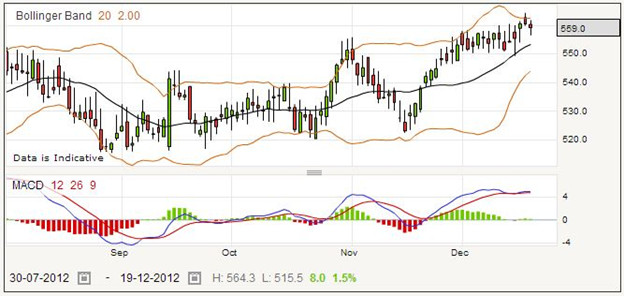Shaftesbury plc is a leading property business that focuses on properties in the West End of London. From a spread betting perspective, you can see from the chart below a lot of volatility, giving the opportunities for profit if you can find the right bets to place.

Shaftesbury was founded in 1986, and floated on the London Stock Exchange in the following year. In common with most property companies, when the Real Estate Investment Trust (REIT) tax organization became available in 2007 in the UK, it filed and converted to REIT status. This gives significant tax benefits to the company and therefore investors, and one of the conditions of REIT status is that the company will pay out at least 90% of its income in dividends to shareholders, making it very attractive.
Shaftesbury holds an interesting selection of properties. One of the main areas is Carnaby Street, where it has 126 shops, 44 restaurants, and 68 residences, comprising 33% of the company’s assets. Covent Garden is another major investment area, with 28% of the company’s assets in direct ownership, and an additional 7% in shared ownership with Longmartin Joint Venture. The third major area is Chinatown, representing 23% of the company’s assets. That leaves 9% of the assets in the remaining areas of Soho, St Martin’s Courtyard, and Charlotte Street.
In common with all other property investment companies, Shaftesbury suffered from falling property values in 2007, but it has more than recovered to its highest level. The volatility evident from the daily price chart above makes it an attractive prospect for traders and spread betters. Note particularly that many of the candles have long bodies, showing that the opening and closing prices on those days were very different, an even greater indication of the volatility. The MACD has done a fairly good job of identifying the strong trends on the right-hand side of the chart.
Shaftesbury Rolling Daily: How to Spread Bet on Shaftesbury Shares?
If you are tempted to spread bet on Shaftesbury, you should remember that this is a volatile stock and you must be careful not to risk too much of your account on any individual bet. Say you decide to place a long bet on the stock, which is currently quoted at 557.1 – 560.4. With due consideration of the amount you are risking and your account size, you choose to place a wager for £20 per point at the buying price of 560.4.
If this works out, you may find that the price goes up to 578.6 – 581.9, allowing you to close your winning trade at 578.6. Taking the opening price of 560.4 away from 578.6, this bet is showing a gain of 18.2 points. Your stake was £20 per point. That means you have won £364.
Of course, spread betting would be easy if you could always pick the winners, but sometimes with the best of technical analysis you will still have losers. Say the price dropped to 544.2 – 547.5. The opening price was 560.4, as noted previously, and the closing price this time was 544.2, which is 16.2 points less. That means you have lost 16.2 points which at £20 per point amounts to £324.
Many spread betters do not have time to watch the market all day long, so to save them being concerned about losing too much they use a stop loss order to take them out of a losing trade in a timely way. In this case if you had used a stop loss order, you might find that your losing trade would be exited for you by your spread betting provider at a price of 548.5 – 551.8. The closing price is 548.5, and the opening price is 560.4, giving a loss of 11.9 points. With a stake of £20 per point, you would have lost £238.
Shaftesbury Quarterly Futures
When you choose to use a futures style bet, you need to decide whether to place a near quarter, mid-quarter, or far quarter bet. Generally the spread increases the further out the expiration date, but if you are uncertain how long the share price will take to go where you expect it to, then you may choose the far quarter bet in order to give yourself and the share more time.
Suppose you expect the price of Shaftesbury to go up. The current far quarter quote is 559.2 – 566.5, and you decide to place a bet for £16 per point at the buying price of 566.5. Perhaps in a few months you find that the price has gone up to 591.45 – 598.75 and decide to close the position and collect your winnings. The opening price was 566.5. The bet closed at 591.45. That means that you gained 24.95 points. Your stake was £16 per point, so this works out to a profit of £399.20.
It might be that the price went down after you placed the bet, giving you a losing position, in which case you might close the bet and accept the loss. Say the price went down to 542.0 – 549.3. Your opening price was 566.5 as before, and you chose to close the bet at 542.0. The point difference is 24.5, so at £16 per point you have lost £392.
It is important that you close a losing trade quickly to minimize your loss. It can be a good idea to take out a stoploss order so that the trade is closed quickly whether or not you are watching it. In this case a stoploss order might have closed your trade when the quote was 548.45 – 555.75. With an opening price of 566.5 and a closing price of 548.45, this time your loss would be 18.05 points. That means you would have lost £288.80.